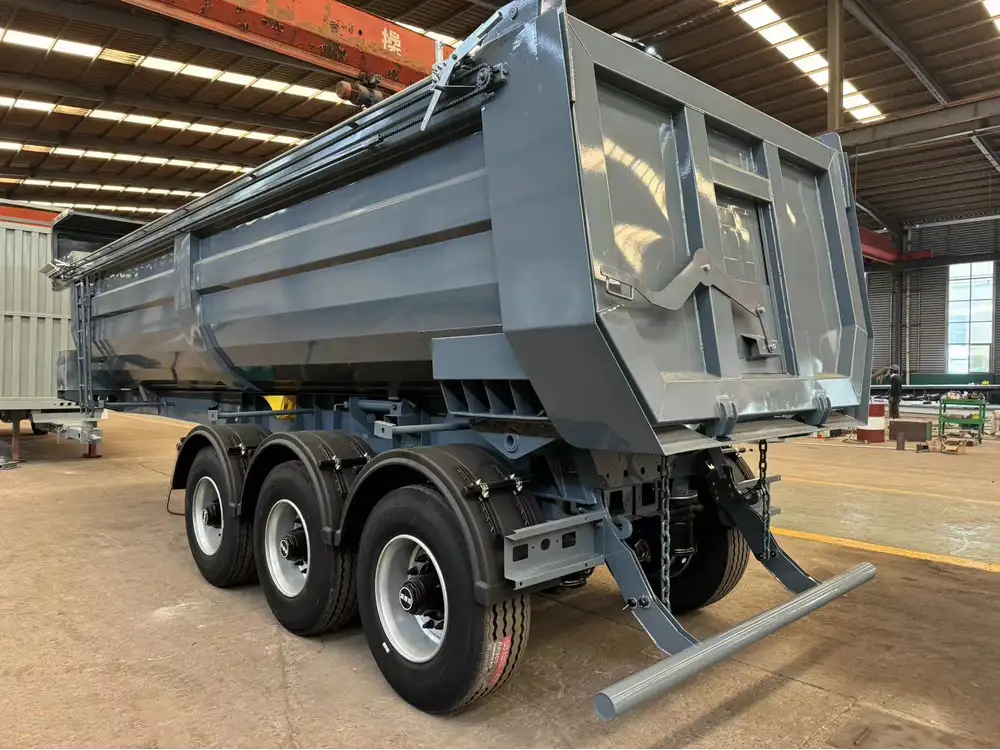Turning a boat trailer into a flatbed can unlock versatile opportunities for both personal and commercial use. This detailed guide will meticulously outline each step of the conversion process, provide insight into needed materials and tools, and highlight safety considerations while ensuring that your newly converted flatbed trailer surpasses your expectations for durability and functionality.
Understanding the Essentials
Why Convert a Boat Trailer?
Before delving into the nuts and bolts of conversion, let’s explore the advantages of repurposing a boat trailer:
- Cost-Effectiveness: Converting an existing trailer avoids the expense of purchasing a new flatbed.
- Versatility: A flatbed can transport various items, from furniture to construction materials.
- Customizability: Tailor your trailer to comply with your specific needs—size, build, and accessories can all be adjusted.

Key Considerations
When considering a boat trailer conversion, various factors must be weighed:
| Aspect | Details |
|---|---|
| Weight Capacity | Ensure the trailer can handle the weight of the items you intend to transport. |
| Dimensions | Fit it to your vehicle and intended use. |
| Ease of Loading/Unloading | Evaluate the height and design for accessibility. |
| Regulatory Compliance | Check local laws regarding trailer modifications. |
Step-by-Step Conversion Process
1. Initial Assessment and Planning
Evaluate the Trailer: Inspect the current condition of the boat trailer. Look for any structural weaknesses or corrosion which could affect the conversion.
Required Tools and Materials: Gather the following essentials before starting:
Tools:
- Wrenches
- Sockets
- Saw (angle grinder or reciprocating saw)
- Drill
- Measuring tape
- Welding machine (if necessary)
Materials:
- Flat sheet metal or plywood for the deck
- Reinforcement beams (steel or aluminum)
- Brackets and fasteners
- Paint or coating for protection
- Wood or metal for side rails (optional)

2. Removing Existing Components
- Dismantle Boat Mounts: Begin by removing any parts of the trailer designed specifically for boat support, including cradles, rollers, and winches.
- Clean the Frame: Once the boat-specific components are removed, clean the frame of the trailer to eliminate any rust or debris. This condition will support better adhesion and coating for your modifications.
3. Designing the Flatbed Deck
Measuring and Cutting:
- Measure the dimensions of the trailer frame to determine the size of the flatbed.
- Cut the flat sheet metal or plywood to fit the trailer’s frame snugly. Make sure to account for potential overhang, especially if you plan to load larger items.
4. Attaching the Deck
- Securing the Flatbed: You will need to attach the flatbed to the trailer frame using brackets and fasteners. Drill holes in the trailer frame and the decking material, spacing them evenly for support.
- Reinforcement: Depending on the weight capacity needed, you might want to consider adding support beams beneath the flatbed. This structurally sound practice ensures the flatbed maintains integrity under load.

5. Adding Side Rails
If desired, side rails can enhance safety during transportation:
- Measuring for Side Rails: Determine the dimensions based on your loading strategy.
- Cutting and Attaching Rails: Using wood or metal, construct rails that can be attached with brackets to the trailer frame. Ensure the bolts are tightened securely to prevent detachment during travel.
6. Safety Features and Final Touches
Lighting Installation: Follow your local regulations to install proper lighting on the trailer.
- Tail Lights: Install these at the rear of the trailer for visibility.
- Reflective Tape: Adorn the sides with reflective tape to enhance visibility during nighttime or low-light conditions.
Painting or Coating: Apply a protective layer to shield against corrosion and damage. Options include:
- Rust-Proof Paint: Essential for longevity.
- Carpet or Rubber Liners: Aid in protecting any delicate items transported.
7. Conducting a Final Inspection
Pre-Operational Check: Before using your newly converted flatbed trailer, conduct a thorough inspection:
| Check Point | Action |
|---|---|
| All Fasteners | Ensure every bolt and screw is tight. |
| Electrical System | Validate that all lights work correctly. |
| Structural Integrity | Check for any potential weak points. |
Take your trailer for a test drive to ensure stability, braking, and overall handling are up to standard.

Common Problems and Solutions
Problem: Insufficient Load Capacity
Solution: If you find the trailer struggles with weight, consider reinforcing it further, adding additional beams, or switching to a sturdier material for the flatbed flooring.
Problem: Difficulty in Loading
Solution: Evaluate the height of the trailer. If it’s too high off the ground, consider adjusting the axle or using ramps for easier accessibility.

Problem: Legal Compliance
Solution: Stay updated with local DMV regulations regarding trailer modifications to ensure no legalities hinder your operation.
Frequently Asked Questions
What Kind of Trailer Can I Use?
While the primary focus may be on boat trailers, any trailers with a robust frame and axle setup can work if they meet your desired height and weight specifications.

Can I Use It for Heavy Equipment?
Absolutely, just ensure that your trailer’s weight rating and structural integrity align with the equipment you plan to transport.
Are There Any Maintenance Tips for the Converted Flatbed?
Regular maintenance should involve checking for rust, leveraging protective coatings, and inspecting the structural soundness, especially after heavy use.
Conclusion
Converting a boat trailer into a flatbed opens a world of possibilities—whether to meet personal needs or for business opportunities. By following our comprehensive guide, you can ensure that your trailer meets the demands placed upon it while retaining structural integrity and safety. Embrace the adaptability of your new trailer, and enjoy the confident transport of your goods for years to come!



